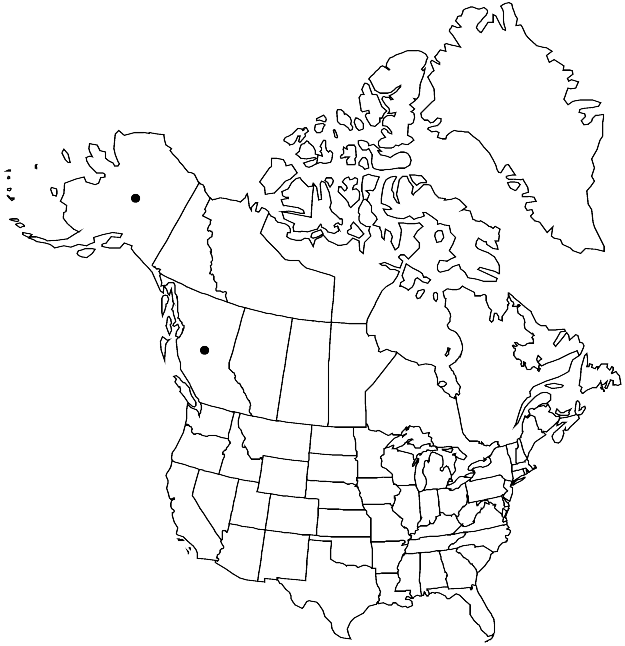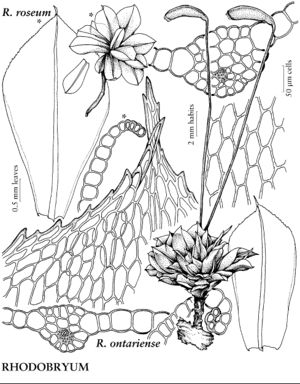Rhodobryum roseum
Laubm. Deutschl. 2: 445. 1892.
Stems 1–3 cm, usually branched by slender subapical innovations. Stem leaves relatively few in rosettes, 18–22, 3–8 mm; margins revolute to mid leaf or less; apex acute; costa in median rosette leaves subpercurrent to percurrent or short-excurrent, apiculus or hair-point slender, in cross section stereid band small, not reaching dorsal epidermal layer, with at least one distinct intervening layer of thin-walled cells. Perichaetial inner leaves with costa subpercurrent, percurrent, or short-excurrent, hair-point smooth to weakly denticulate. Spores 16–20 µm.
Phenology: Capsules mature Jul–Sep (late summer).
Habitat: Rich soil, humus, litter, coastal tundra, shrublands, forests
Elevation: low to moderate elevations (0-300 m)
Distribution

B.C., Alaska, Eurasia (including India, Japan).
Discussion
In the flora area, Rhodobryum roseum is found only in coastal and near-coastal regions of Alaska, principally the Aleutian Islands and adjacent far northwestern British Columbia, and disjunct in the Queen Charlotte Islands. Sporophytes are rarely produced, and many populations consist of small plants that are sterile or only female. At least some locations of this species are in areas that remained ice-free during the last glaciation.
Selected References
None.
